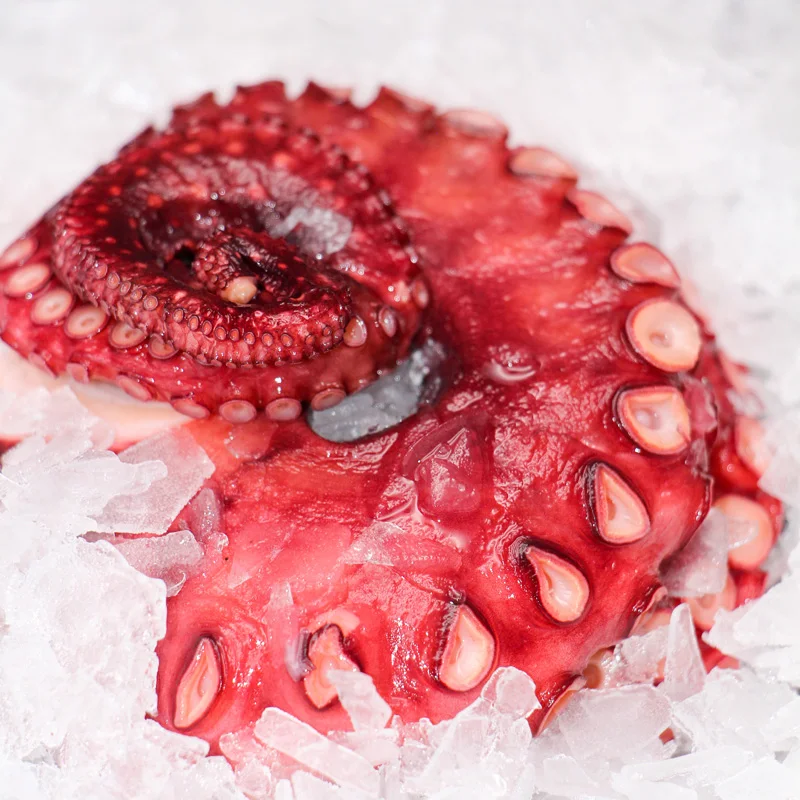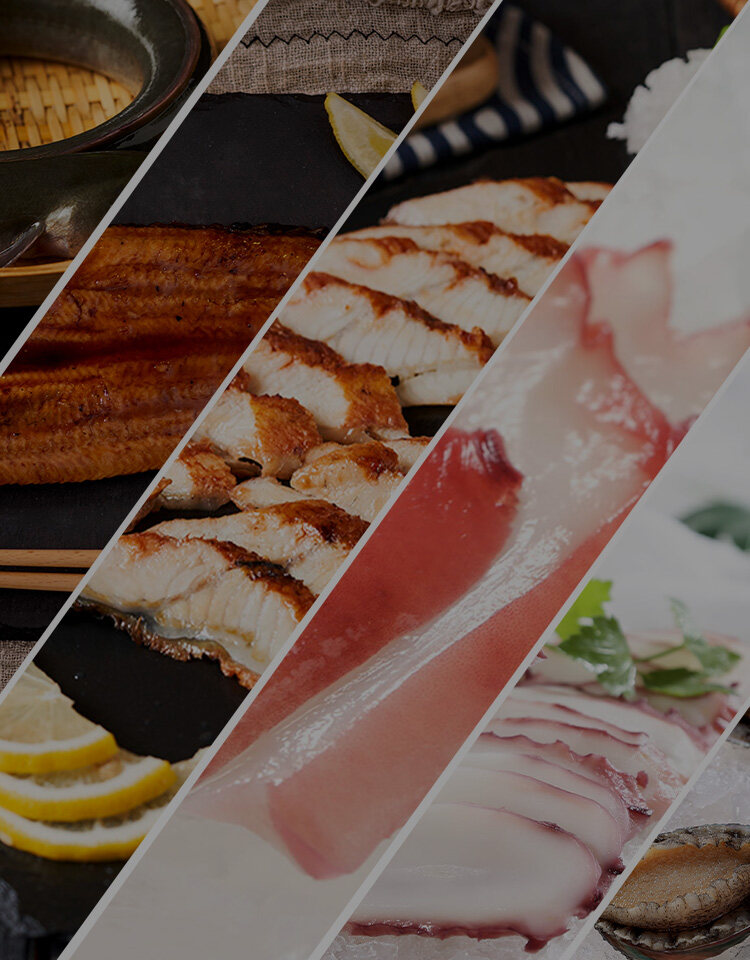Email cannot be empty
Password cannot be empty
Email format error
Email cannot be empty
Email already exists
6-20 characters(letters plus numbers only)
The password is inconsistent
Email format error
Email cannot be empty
Email does not exist
6-20 characters(letters plus numbers only)
The password is inconsistent


How to Store Frozen Fresh Seafood Properly
Storing frozen fresh seafood properly is crucial for maintaining its quality, flavor, and safety. Whether you’re a home cook, a restaurateur, or someone who frequently shops for frozen seafood, proper storage can make the difference between a perfectly cooked meal and a disappointing one. In this article, we'll walk you through everything you need to know about storing frozen fresh seafood and ensuring it remains in top-notch condition.
Why Proper Storage of Frozen Fresh Seafood Is Important
Seafood is one of the most perishable foods, and improper storage can lead to a loss of texture, flavor, and nutritional value. Whether you’re buying frozen seafood in bulk or just looking to store a few items for the week, improper handling can result in freezer burn, spoilage, or even foodborne illness. The key to maintaining its best quality is ensuring it’s stored at the right temperature and kept safe from contaminants.
Here’s how you can maximize the shelf life and quality of your frozen seafood.
1. Freezer Temperature: The First Line of Defense
The temperature at which you store your frozen fresh seafood is the most important factor in preserving its quality. If your freezer is too warm, seafood can begin to thaw, which leads to bacteria growth and an eventual loss of flavor and texture.
Ideal Temperature for Storing Frozen Seafood
To keep your seafood fresh, your freezer should be set at 0°F (-18°C) or lower. This is the recommended temperature to keep fish and shellfish safe and in the best condition.
Here’s why:
- 0°F (-18°C) is the freezing point at which all bacteria growth is halted. This temperature ensures that seafood stays safe and maintains its taste and texture.
- At this temperature, seafood can be stored for a long period without significant degradation. However, the longer it stays frozen, the greater the risk of losing some of its flavor and texture, so it’s always best to consume it as soon as possible.
2. Packaging Matters: Preventing Freezer Burn
If you’ve ever pulled a piece of frozen fish out of the freezer only to find it covered in dry, discolored patches, you’ve likely experienced freezer burn. Freezer burn occurs when air reaches the surface of the food, causing it to lose moisture and develop ice crystals.
How to Package Frozen Seafood for Long-Term Storage
- Vacuum Sealing: One of the most effective ways to prevent freezer burn is by using a vacuum sealer. This device removes all air from the packaging, which helps preserve the seafood’s quality and texture. You can find vacuum-seal bags designed specifically for freezing, which are great for packaging fish fillets, shrimp, and other types of seafood.
- Plastic Wrap & Aluminum Foil: If you don’t have a vacuum sealer, you can tightly wrap your seafood in plastic wrap, followed by a layer of aluminum foil. This creates a barrier that keeps air out and moisture in.
- Freezer Bags: For smaller portions, freezer bags can work well. Make sure to squeeze out all the air before sealing the bag. A great tip is to use a straw to suck out any remaining air, which reduces the risk of freezer burn.
Tip:
Label each package with the type of seafood and the date it was frozen. This will help you keep track of its age and ensure that you use it within the recommended time frame.
3. Handling Thawing: The Right Way to Thaw Frozen Seafood
How you thaw your frozen seafood plays a huge role in preserving its texture and flavor. Thawing seafood improperly can result in a soggy texture and a loss of freshness.
Best Methods for Thawing Frozen Seafood
- Thawing in the Refrigerator: The best and safest method for thawing frozen seafood is to move it from the freezer to the fridge. Allow it to thaw slowly over a period of 8-12 hours (or overnight). This method ensures that the seafood stays at a safe temperature (below 40°F or 4°C), preventing bacteria from growing.
- Thawing Under Cold Water: If you’re in a rush, you can place your sealed seafood in a bowl of cold water. Ensure the seafood is in a leak-proof package, and change the water every 30 minutes. This method usually takes 1-2 hours depending on the size of the seafood.
- Do Not Thaw at Room Temperature: Never thaw frozen seafood at room temperature, as this can cause the seafood to enter the danger zone (between 40°F - 140°F or 4°C - 60°C), where bacteria multiply rapidly.
Quick Tip:
If you accidentally thaw too much seafood, don’t refreeze it. Once seafood has been thawed, it should be cooked and consumed within 1-2 days for the best flavor and safety.
4. Storage Duration: How Long Can You Keep Frozen Seafood?
Frozen seafood can last a long time if stored correctly, but its quality may deteriorate the longer it stays frozen. Here’s a general guideline for how long different types of seafood can be stored in the freezer:
- Fish Fillets: Up to 6 months.
- Shrimp, Lobster, and Scallops: Up to 12 months.
- Whole Fish: Up to 6-8 months.
- Shellfish: Up to 3-6 months.
- Crab Meat: Up to 6 months.
How to Maximize Freshness
While seafood is safe to eat after these time frames, its taste and texture may start to degrade over time. For the best quality, aim to use your frozen seafood within the first few months of purchase. After that, you may notice that the fish becomes mushier or loses its delicate flavor.
5. Organizing Your Freezer: Make Space for Your Frozen Seafood
Keeping your freezer organized not only helps you find what you need more easily but also ensures that your frozen fresh seafood stays in optimal conditions. Here’s how to get your freezer in order:
Tips for Freezer Organization
- Use Clear Bins: Label clear plastic bins with the type of seafood they contain. This will help you easily identify what’s inside without having to open packages and let cold air out.
- Keep Seafood Separate: Store seafood away from other frozen items that might have strong odors, like meat or certain frozen vegetables. Seafood has a delicate flavor, and keeping it isolated helps preserve its taste.
- FIFO Method: FIFO stands for "First In, First Out." This method ensures that you use your oldest seafood first. Always place the newer packages of seafood behind the older ones, so you use them up in the correct order.
6. Signs of Spoilage: How to Tell If Your Frozen Seafood Has Gone Bad
Even though seafood can last a long time in the freezer, it’s important to be able to recognize signs that it might be going bad.
Signs of Spoiled Frozen Seafood
- Freezer Burn: Ice crystals on the surface or dry patches on the seafood indicate freezer burn. While it’s still safe to eat, the texture and flavor will suffer.
- Off Odor: A rancid, sour, or overly fishy smell is a sign that the seafood has gone bad. Fresh seafood should smell clean and like the ocean, not foul or off-putting.
- Discoloration: If the seafood has a strange or dull color, it may have been in the freezer too long or thawed and refrozen multiple times.


